
Turn your Baofeng walkie talkie into a super SHTF survival radio with HAM-FRS-PMR-GMRS-MURS-MARINE-WEATHER-BUSINESS channels. The secret is in this free programming file. When disaster hits, you won’t need to worry about which is best for emergency communications, because you can talk to anyone! Emergency preparedness is essential for radio communications.
BAOFENG SURVIVAL CHANNELS 99 RADIO FREQUENCIES
In an emergency, you may need to communicate with others on their channels…

In an emergency, you may need to communicate with others who are using various types of radios, on many different channels. Are they using an FRS radio? Or is it MURS or GMRS? Or are they on HAM 2 meters? Marine VHF? Don’t let a lack of preparation prevent your emergency communication needs. Whatever it is, wherever you are, prepare for it now by programming all those channels in your Baofeng radio. When disaster hits, just dial them up and talk, in any emergency situation. Are you prepared?
This frequency list is for programming VHF-UHF transceivers (VHF-UHF HT). It turns your Baofeng FM HT into a wonderful SHTF-HAM-FRS-GMRS-MURS-MARINE-WEATHER-BUSINESS-SAR radio for Disaster Preparedness and Emergency Communications.
This list and its companion printable list contains a variety of useful frequencies for the Emcomm Operator, Prepper, Survivalist, or Disaster Preparedness Communicator.
PRINTABLE FREQUENCY CHART:
All FRS, GMRS, PMR, and MURS channels for survivalists and preppers are programmed (transmitting the most common PL tone squelch but receiving carrier squelch for maximum interoperability). Highly recommended SHTF Survival channels, well-known Ham Prepper organizations’ calling channels, most common Marine VHF Simplex, along with Ham radio 2 meter simplex channels are included. NOAA Weather channels are provided for receive-only purposes. For easier use, each channel has a corresponding abbreviated Channel Name that can be displayed instead of the frequency, selectable in some types of radios.
The original source of this article is the RadioMaster Reports blog.
Many small inexpensive HTs, such as Baofeng, are sold without suitable default programming. To use these radios, as well as similar Ham radios, it is necessary to either program them manually using the keypad, or to use software to load the desired channel frequencies into the radios.

CHIRP PROGRAMMING SOFTWARE
The Chirp software is convenient and popular.
The list we provide here can be programmed in Chirp, and it may be modified if necessary to add some of your own frequency channels. Then use a USB-to-Radio cable to load the file into your Baofeng or other brand of radio.
BAOFENG SQUELCH SOFTWARE MOD
Chirp software provides a fix for the well-known Baofeng squelch problem. This is a software modification that resets the squelch to enable higher tighter levels of squelch, controlled by the Baofeng radio’s squelch setting. The Baofeng Service Settings of the Chirp software are explained on the Chirp site:
Fixing the Baofeng Squelch Levels UV5R / UV82 / F8HP series
Available in CHIRP software version: 20150111 or newer
“The factory squelch settings on these models has long been known to have little or no impact on the actual squelch level. The smallest noise burst would easily pop open the squelch. Until now, it was one of those little ‘quirks’ you just needed to tolerate. “
“But no longer… Through the efforts of the CHIRP development team, this has become a thing of the past. A new ‘Service Settings’ tab has been added to CHIRP which allows you to alter the factory level settings, so a weak signal can open level 1, and only a monster signal can open level 9.”
If you are not using a Baofeng, depending on the brand of radio you have, you may need to unlock your radio for full spectrum transmit. YMMV.
TYPES OF SERVICES IN THIS LIST
Note: Material presented here on RadioMaster Reports purposely does not include information or advice about licensing, governmental authorizations, radio rules, or legalities concerning radio frequencies. Please see other radio forums for greater focus on such issues. The focus of this is technology details of frequencies, programming, and electronic radiocommunication for Emergency Disaster Preparedness and SHTF Channel Radio Survivalist Prepping.
LIMITATIONS
The design objective of this programming list is to maximize interoperability with common radio services within 99 channels, so that it can be used within the memory limitations of inexpensive radios. This has led to a small compromise, by not including some less-common business channels and marine commercial duplex radiotelephone channels. An additional larger channel list programming file will be posted on the RadioMaster Reports site for download, when it is updated.
FRS
Family Radio Service (FRS) is a low power, short range, radio system. FRS walkie talkies are known as “bubble pack radios” because they are sold cheaply in the hang tab shelves of stores or in the toy section. They can be found nearly everywhere on the planet now, and are some of the most ubiquitous radio communication devices in the world. FRS radios are limited to a half-watt of output power (500 milliWatts) and have permanently attached antennas, preventing the addition of an external gain antenna. So, the normal range of FRS walkie talkies in a suburban environment is about a mile or less. FRS Frequencies are FM simplex, 7 channels at 462 MHz and 7 channels at 467 MHz in the UHF band. These channels are in between the GMRS frequencies. GMRS radios may also include FRS channels. The default PL tone for FRS is 67.0 Hz. It is also known as Privacy tone #1, or PL XZ, or Sub-channel CTCSS 01.
GMRS
General Mobile Radio Service (GMRS) is a local distance radio system in the same UHF band as FRS. GMRS radios can be capable of longer distance range and greater dependability than FRS. GMRS is becoming more popular as bubble pack walkie talkies (HT) include both GMRS and FRS channels. GMRS-specific frequencies are FM simplex or duplex with 8 channels at 462 MHz and 8 channels at 467 MHz in the UHF band. The maximum power level of a GMRS is limited to 50 Watts. The most common GMRS mobile, base, or repeater radios use external gain antennas. GMRS walkie talkie handheld transceivers (HT) have only 5 Watts or less, commonly with a ducky antenna. Full duplex repeaters can be used with GMRS. GMRS Repeaters have their input channel at 467 MHz, and their output at 462 MHz. The offset is exactly 5 MHz. For repeater use, the field units transmit on 467 Mhz and receive on 462 MHz. Most bubble pack GMRS radios are simplex-only, so they do not function through a repeater. They operate only on the repeater output frequency (GMRS Channels 15 through 22). The default PL tone for GMRS simplex is 67.0 Hz. It is also known as Privacy tone #1, or PL XZ, or Sub-channel CTCSS 01. In a GMRS radio, the GMRS channel number is often the same for simplex and duplex, but a secondary (programmable) feature of the channel controls whether it transmits duplex +5MHz split or simplex. The GMRS simplex and duplex (repeater) channels are included in this list and programming file. In the Channel Name, they are programmed and identified separately; the repeater channel has an R in the channel name. For example as GMR 20 is the simplex channel, and GMR20R is the repeater duplex channel. PL tones vary among different repeaters in various geographic areas. The default PL tone for GMRS repeater channels is 141.3 Hz, but it can be changed in the user’s radio programming to another PL tone frequency as required to hit specific repeaters.
PMR446
Personal Mobile Radio (PMR or PMR446) is a low power, short range, radio system similar to FRS. It is very common in Europe, Africa, and Asia. Walkie talkie bubble pack PMR radios are sold cheaply. PMR radios are limited to a half-watt of output power (500 milliWatts). So, the normal range of PMR walkie talkies in a suburban environment is about a mile or less. PMR frequencies are commonly FM simplex, 8 channels at 446 MHz in the UHF band. An additional 14 digital channels are available for PMR446, but are less common. In USA and many other places, the 446 MHz band is assigned to Amateur Radio Service (Ham) so, all the PMR channels can be used by hams in those areas. The default PL tone for PMR is 67.0 Hz. It is also known as Privacy tone #1, or PL XZ, or Sub-channel CTCSS 01. The PMR Prepper channel (PMR 3) (446.03125 MHz) is somewhat interoperable with the Ham UHF Prepper channel (HAM U3) (446.030 MHz).
HAM
Amateur Radio Service, widely known as Ham Radio, is an internationally allocated radio service for non-commercial radio communications. It has frequency bands in all areas of the spectrum. The ham radio frequencies in this list are only a few of the most common VHF and UHF channels used by ham operators for local FM simplex. Additionally the list includes the Prepper Ham VHF simplex channel (146.420 MHz), the Survivalist Ham VHF simplex channel (144.550 MHz) and the Prepper Ham UHF simplex channel (446.030 MHz) that is somewhat interoperable with the PMR Prepper channel 3 (446.03125 MHz). The default PL tone for Ham is 100.0 Hz. It is also known as Privacy tone #12, or PL 1Z, or Sub-channel CTCSS 12. Most hams also make use of repeaters in the VHF and UHF bands, but the channels for these repeaters vary according to geographic area. There is no universal repeater channel frequency or PL tone that is valid in all areas, they are all different. When programming your radio, it is advisable to include the repeater channels and PL tones in your area. See a repeater directory for more information.
MARINE
Marine radio service in this list includes the most common simplex VHF channels in use by boats and ships, for inter-ship and safety communications by FM voice. Marine VHF radio is used on the high seas, inland waterways, lakes, and rivers by vessels and shore stations. No PL tone is used by Marine VHF radios, it is all carrier squelch. The Marine channels have the transmit PL tone turned off, and use Receive Carrier Squelch. Most Marine VHF radios also have duplex channels for use when communicating with shore radiotelephone and port operations. The duplex channels are purposely not included in this list, in order to keep the total number of channels below 99.
BUSINESS
Business radio, or commercial VHF and UHF radio channels, are generally set up for specific companies in a local geographic area. There are also a few business radio channels, called Business Itinerant, that are devoted to operation anywhere. These are low power simplex channels, and only 2 of them are included in this list. The Red Dot (151.625 MHz) and the Purple Dot (151.955 MHz) channels are common Business Itinerant channels, and they are some of the most popularly used channels on VHF for commercial or rental HT walkie talkies. The default PL tone for the Business channels is 67.0 Hz. It is also known as Privacy tone #1, or PL XZ, or Sub-channel CTCSS 01.
SAR
For EMERGENCY ONLY, SAR is a service channel for Search and Rescue (SAR) or Emergency Medical Technicians (EMT) . The primary interoperability channel in USA for SAR is 155.160 MHz FM simplex. This is a very important channel to keep clear for emergency purposes, and should never be transmitted on for non-emergency communications! The purpose is to provide mobile, HT, and base communications for field operations of land or ground search and rescue teams, ambulances, and medical personnel at the scene of incidents. It is identified in the list as the channel name SAREMT. The default interoperability PL tone for SAR EMT is 127.3 Hz. It is also known as Privacy tone #19, or PL 3A, or Sub-channel CTCSS 19.
Programming Your Radio
The type of radio you have determines how you program it. You may have a mobile, base, or handheld (HT) radio. Some radios require manual programming. Most modern radios have the capability of programming via a cable adapter between your computer USB or serial port, and the microphone or data jack of the radio. Please see your instruction manual or user guide for your radio, for information about how to program it.
PL TONE
All channels in the list are default Carrier Squelch Receive.
All FRS, GMRS, PMR, MURS, BUSINESS, and HAM channels are programmed for Transmitting PL tone. For interoperability, the Transmit PL is set to default to the most common tone frequency for each channel and type of service.
The Marine channels have the transmit PL tone turned off. The user may change and reprogram the PL Tone frequency as needed, or may desire to use Tone Squelch instead of Carrier Squelch.
GMRS FRS MURS PMR MARINE BUSINESS HAM WEATHER
CSV PROGRAMMING FILE CHART
MEM CH SLOT |
UHF VHF |
CHANNEL DESCRIPTION |
CHANNEL DISPLAY NAME |
FREQUENCY RECEIVE |
FREQUENCY TRANSMIT |
OFF SET MHZ |
PL |
TONE HZ |
MODE |
0 |
UHF |
FRS & GMRS CH 1 |
FRS 01 |
462.562500 |
SIMPLEX |
0.0 |
TX PL |
67.0 |
NFM |
1 |
UHF |
FRS & GMRS CH 1 |
FRS 1 |
462.562500 |
SIMPLEX |
0.0 |
TX PL |
67.0 |
NFM |
2 |
UHF |
FRS & GMRS CH 2 |
FRS 2 |
462.587500 |
SIMPLEX |
0.0 |
TX PL |
67.0 |
NFM |
3 |
UHF |
FRS & GMRS CH 3 |
FRS 3 |
462.612500 |
SIMPLEX |
0.0 |
TX PL |
67.0 |
NFM |
4 |
UHF |
FRS & GMRS CH 4 |
FRS 4 |
462.637500 |
SIMPLEX |
0.0 |
TX PL |
67.0 |
NFM |
5 |
UHF |
FRS & GMRS CH 5 |
FRS 5 |
462.662500 |
SIMPLEX |
0.0 |
TX PL |
67.0 |
NFM |
6 |
UHF |
FRS & GMRS CH 6 |
FRS 6 |
462.687500 |
SIMPLEX |
0.0 |
TX PL |
67.0 |
NFM |
7 |
UHF |
FRS & GMRS CH 7 |
FRS 7 |
462.712500 |
SIMPLEX |
0.0 |
TX PL |
67.0 |
NFM |
8 |
UHF |
FRS CH 8 |
FRS 8 |
467.562500 |
SIMPLEX |
0.0 |
TX PL |
67.0 |
NFM |
9 |
UHF |
FRS CH 9 |
FRS 9 |
467.587500 |
SIMPLEX |
0.0 |
TX PL |
67.0 |
NFM |
10 |
UHF |
FRS CH 10 |
FRS 10 |
467.612500 |
SIMPLEX |
0.0 |
TX PL |
67.0 |
NFM |
11 |
UHF |
FRS CH 11 |
FRS 11 |
467.637500 |
SIMPLEX |
0.0 |
TX PL |
67.0 |
NFM |
12 |
UHF |
FRS CH 12 |
FRS 12 |
467.662500 |
SIMPLEX |
0.0 |
TX PL |
67.0 |
NFM |
13 |
UHF |
FRS CH 13 |
FRS 13 |
467.687500 |
SIMPLEX |
0.0 |
TX PL |
67.0 |
NFM |
14 |
UHF |
FRS CH 14 |
FRS 14 |
467.712500 |
SIMPLEX |
0.0 |
TX PL |
67.0 |
NFM |
15 |
UHF |
GMRS CH 15 |
GMRS15 |
462.550000 |
SIMPLEX |
0.0 |
TX PL |
67.0 |
FM |
16 |
UHF |
GMRS CH 16 |
GMRS16 |
462.575000 |
SIMPLEX |
0.0 |
TX PL |
67.0 |
FM |
17 |
UHF |
GMRS CH 17 |
GMRS17 |
462.600000 |
SIMPLEX |
0.0 |
TX PL |
67.0 |
FM |
18 |
UHF |
GMRS CH 18 |
GMRS18 |
462.625000 |
SIMPLEX |
0.0 |
TX PL |
67.0 |
FM |
19 |
UHF |
GMRS CH 19 |
GMRS19 |
462.650000 |
SIMPLEX |
0.0 |
TX PL |
67.0 |
FM |
20 |
UHF |
GMRS CH 20 |
GMRS20 |
462.675000 |
SIMPLEX |
0.0 |
TX PL |
141.3 |
FM |
21 |
UHF |
GMRS CH 21 |
GMRS21 |
462.700000 |
SIMPLEX |
0.0 |
TX PL |
67.0 |
FM |
22 |
UHF |
GMRS CH 22 |
GMRS22 |
462.725000 |
SIMPLEX |
0.0 |
TX PL |
67.0 |
FM |
23 |
UHF |
GMRS CH 15 REPEATER 550 |
GMR15R |
462.550000 |
DUPLEX+ |
5.0 |
TX PL |
141.3 |
FM |
24 |
UHF |
GMRS CH 16 REPEATER 575 |
GMR16R |
462.575000 |
DUPLEX+ |
5.0 |
TX PL |
141.3 |
FM |
25 |
UHF |
GMRS CH 17 REPEATER 600 |
GMR17R |
462.600000 |
DUPLEX+ |
5.0 |
TX PL |
141.3 |
FM |
26 |
UHF |
GMRS CH 18 REPEATER 625 |
GMR18R |
462.625000 |
DUPLEX+ |
5.0 |
TX PL |
141.3 |
FM |
27 |
UHF |
GMRS CH 19 REPEATER 650 |
GMR19R |
462.650000 |
DUPLEX+ |
5.0 |
TX PL |
141.3 |
FM |
28 |
UHF |
GMRS CH 20 REPEATER 675 |
GMR20R |
462.675000 |
DUPLEX+ |
5.0 |
TX PL |
141.3 |
FM |
29 |
UHF |
GMRS CH 21 REPEATER 700 |
GMR21R |
462.700000 |
DUPLEX+ |
5.0 |
TX PL |
141.3 |
FM |
30 |
UHF |
GMRS CH 22 REPEATER 725 |
GMR22R |
462.725000 |
DUPLEX+ |
5.0 |
TX PL |
141.3 |
FM |
31 |
UHF |
PMR446 CH 1 |
PMR 1 |
446.006250 |
SIMPLEX |
0.0 |
TX PL |
67.0 |
NFM |
32 |
UHF |
PMR446 CH 2 |
PMR 2 |
446.018750 |
SIMPLEX |
0.0 |
TX PL |
67.0 |
NFM |
33 |
UHF |
PMR446 CH 3 |
PMR 3 |
446.031250 |
SIMPLEX |
0.0 |
TX PL |
67.0 |
NFM |
34 |
UHF |
PMR446 CH 4 |
PMR 4 |
446.043750 |
SIMPLEX |
0.0 |
TX PL |
67.0 |
NFM |
35 |
UHF |
PMR446 CH 5 |
PMR 5 |
446.056250 |
SIMPLEX |
0.0 |
TX PL |
67.0 |
NFM |
36 |
UHF |
PMR446 CH 6 |
PMR 6 |
446.068750 |
SIMPLEX |
0.0 |
TX PL |
67.0 |
NFM |
37 |
UHF |
PMR446 CH 7 |
PMR 7 |
446.081250 |
SIMPLEX |
0.0 |
TX PL |
67.0 |
NFM |
38 |
UHF |
PMR446 CH 8 |
PMR 8 |
446.093750 |
SIMPLEX |
0.0 |
TX PL |
67.0 |
NFM |
39 |
VHF |
MURS CH 1 |
MURS 1 |
151.820000 |
SIMPLEX |
0.0 |
TX PL |
67.0 |
NFM |
40 |
VHF |
MURS CH 2 |
MURS 2 |
151.880000 |
SIMPLEX |
0.0 |
TX PL |
67.0 |
NFM |
41 |
VHF |
MURS CH 3 |
MURS 3 |
151.940000 |
SIMPLEX |
0.0 |
TX PL |
67.0 |
NFM |
42 |
VHF |
MURS CH 4 BLUE DOT |
MURS 4 |
154.570000 |
SIMPLEX |
0.0 |
TX PL |
67.0 |
FM |
43 |
VHF |
MURS CH 5 GREEN DOT |
MURS 5 |
154.600000 |
SIMPLEX |
0.0 |
TX PL |
67.0 |
FM |
44 |
VHF |
BUSINESS RED DOT |
BUSRED |
151.625000 |
SIMPLEX |
0.0 |
TX PL |
67.0 |
FM |
45 |
VHF |
BUSINESS PURPLE DOT |
BUSPUR |
151.955000 |
SIMPLEX |
0.0 |
TX PL |
67.0 |
FM |
46 |
VHF |
MARINE CH 01A |
MAR01A |
156.050000 |
SIMPLEX |
0.0 |
NO PL |
00.0 |
FM |
47 |
VHF |
MARINE CH 03A |
MAR03A |
156.150000 |
SIMPLEX |
0.0 |
NO PL |
00.0 |
FM |
48 |
VHF |
MARINE CH 05A |
MAR05A |
156.250000 |
SIMPLEX |
0.0 |
NO PL |
00.0 |
FM |
49 |
VHF |
MARINE CH 06 |
MAR06 |
156.300000 |
SIMPLEX |
0.0 |
NO PL |
00.0 |
FM |
50 |
VHF |
MARINE CH 07A |
MAR07A |
156.350000 |
SIMPLEX |
0.0 |
NO PL |
00.0 |
FM |
51 |
VHF |
MARINE CH 08 |
MAR08 |
156.400000 |
SIMPLEX |
0.0 |
NO PL |
00.0 |
FM |
52 |
VHF |
MARINE CH 09 |
MAR09 |
156.450000 |
SIMPLEX |
0.0 |
NO PL |
00.0 |
FM |
53 |
VHF |
MARINE CH 10 |
MAR10 |
156.500000 |
SIMPLEX |
0.0 |
NO PL |
00.0 |
FM |
54 |
VHF |
MARINE CH 11 |
MAR11 |
156.550000 |
SIMPLEX |
0.0 |
NO PL |
00.0 |
FM |
55 |
VHF |
MARINE CH 12 |
MAR12 |
156.600000 |
SIMPLEX |
0.0 |
NO PL |
00.0 |
FM |
56 |
VHF |
MARINE CH 13 |
MAR13 |
156.650000 |
SIMPLEX |
0.0 |
NO PL |
00.0 |
FM |
57 |
VHF |
MARINE CH 14 |
MAR14 |
156.700000 |
SIMPLEX |
0.0 |
NO PL |
00.0 |
FM |
58 |
VHF |
MARINE CH 15 |
MAR15 |
156.750000 |
SIMPLEX |
0.0 |
NO PL |
00.0 |
FM |
59 |
VHF |
MARINE CH 16 SAFETY |
MAR16 |
156.800000 |
SIMPLEX |
0.0 |
NO PL |
00.0 |
FM |
60 |
VHF |
MARINE CH 17 |
MAR17 |
156.850000 |
SIMPLEX |
0.0 |
NO PL |
00.0 |
FM |
61 |
VHF |
MARINE CH 18A |
MAR18A |
156.900000 |
SIMPLEX |
0.0 |
NO PL |
00.0 |
FM |
62 |
VHF |
MARINE CH 19A |
MAR19A |
156.950000 |
SIMPLEX |
0.0 |
NO PL |
00.0 |
FM |
63 |
VHF |
MARINE CH 20A |
MAR20A |
157.000000 |
SIMPLEX |
0.0 |
NO PL |
00.0 |
FM |
64 |
VHF |
MARINE CH 21A |
MAR21A |
157.050000 |
SIMPLEX |
0.0 |
NO PL |
00.0 |
FM |
65 |
VHF |
MARINE CH 22A |
MAR22A |
157.100000 |
SIMPLEX |
0.0 |
NO PL |
00.0 |
FM |
66 |
VHF |
MARINE CH 23A |
MAR23A |
157.150000 |
SIMPLEX |
0.0 |
NO PL |
00.0 |
FM |
67 |
VHF |
MARINE CH 62 |
MAR62 |
156.125000 |
SIMPLEX |
0.0 |
NO PL |
00.0 |
FM |
68 |
VHF |
MARINE CH 63A |
MAR63A |
156.175000 |
SIMPLEX |
0.0 |
NO PL |
00.0 |
FM |
69 |
VHF |
MARINE CH 65A |
MAR65A |
156.275000 |
SIMPLEX |
0.0 |
NO PL |
00.0 |
FM |
70 |
VHF |
MARINE CH 66A |
MAR66A |
156.325000 |
SIMPLEX |
0.0 |
NO PL |
00.0 |
FM |
71 |
VHF |
MARINE CH 67 |
MAR67 |
156.375000 |
SIMPLEX |
0.0 |
NO PL |
00.0 |
FM |
72 |
VHF |
MARINE CH 68 |
MAR68 |
156.425000 |
SIMPLEX |
0.0 |
NO PL |
00.0 |
FM |
73 |
VHF |
MARINE CH 69 |
MAR69 |
156.475000 |
SIMPLEX |
0.0 |
NO PL |
00.0 |
FM |
74 |
VHF |
MARINE CH 71 |
MAR71 |
156.575000 |
SIMPLEX |
0.0 |
NO PL |
00.0 |
FM |
75 |
VHF |
MARINE CH 72 |
MAR72 |
156.625000 |
SIMPLEX |
0.0 |
NO PL |
00.0 |
FM |
76 |
VHF |
MARINE CH 73 |
MAR73 |
156.675000 |
SIMPLEX |
0.0 |
NO PL |
00.0 |
FM |
77 |
VHF |
MARINE CH 74 |
MAR74 |
156.725000 |
SIMPLEX |
0.0 |
NO PL |
00.0 |
FM |
78 |
VHF |
MARINE CH 75 |
MAR75 |
156.775000 |
SIMPLEX |
0.0 |
NO PL |
00.0 |
FM |
79 |
VHF |
MARINE CH 76 |
MAR76 |
156.825000 |
SIMPLEX |
0.0 |
NO PL |
00.0 |
FM |
80 |
VHF |
MARINE CH 77 |
MAR77 |
156.875000 |
SIMPLEX |
0.0 |
NO PL |
00.0 |
FM |
81 |
VHF |
MARINE CH 78A |
MAR78A |
156.925000 |
SIMPLEX |
0.0 |
NO PL |
00.0 |
FM |
82 |
VHF |
MARINE CH 79A |
MAR79A |
156.975000 |
SIMPLEX |
0.0 |
NO PL |
00.0 |
FM |
83 |
VHF |
MARINE CH 80A |
MAR80A |
157.025000 |
SIMPLEX |
0.0 |
NO PL |
00.0 |
FM |
84 |
VHF |
MARINE CH 81A |
MAR81A |
157.075000 |
SIMPLEX |
0.0 |
NO PL |
00.0 |
FM |
85 |
VHF |
MARINE CH 88A |
MAR88A |
157.425000 |
SIMPLEX |
0.0 |
NO PL |
00.0 |
FM |
86 |
VHF |
WEATHER NOAA CH WX 1 |
WX 1 |
162.550000 |
RX ONLY |
0.0 |
NO PL |
00.0 |
FM |
87 |
VHF |
WEATHER NOAA CH WX 2 |
WX 2 |
162.400000 |
RX ONLY |
0.0 |
NO PL |
00.0 |
FM |
88 |
VHF |
WEATHER NOAA CH WX 3 |
WX 3 |
162.475000 |
RX ONLY |
0.0 |
NO PL |
00.0 |
FM |
89 |
VHF |
WEATHER NOAA CH WX 4 |
WX 4 |
162.425000 |
RX ONLY |
0.0 |
NO PL |
00.0 |
FM |
90 |
VHF |
WEATHER NOAA CH WX 5 |
WX 5 |
162.450000 |
RX ONLY |
0.0 |
NO PL |
00.0 |
FM |
91 |
VHF |
WEATHER NOAA CH WX 6 |
WX 6 |
162.500000 |
RX ONLY |
0.0 |
NO PL |
00.0 |
FM |
92 |
VHF |
WEATHER NOAA CH WX 7 |
WX 7 |
162.525000 |
RX ONLY |
0.0 |
NO PL |
00.0 |
FM |
93 |
VHF |
SEARCH RESCUE EMT |
SAREMT |
155.160000 |
SIMPLEX |
0.0 |
TX PL |
127.3 |
FM |
94 |
VHF |
HAM 2 METER 146.42 |
HAM 42 |
146.420000 |
SIMPLEX |
0.0 |
TX PL |
100.0 |
FM |
95 |
VHF |
HAM 2 METER 146.52 |
HAM 52 |
146.520000 |
SIMPLEX |
0.0 |
TX PL |
100.0 |
FM |
96 |
VHF |
HAM 2 METER 146.55 |
HAM 55 |
146.550000 |
SIMPLEX |
0.0 |
TX PL |
100.0 |
FM |
97 |
UHF |
HAM 446.0 |
HAM |
446.000000 |
SIMPLEX |
0.0 |
TX PL |
100.0 |
FM |
98 |
UHF |
HAM 446.03 |
HAM U3 |
446.030000 |
SIMPLEX |
0.0 |
TX PL |
100.0 |
FM |
The original source of this article is RadioMaster Reports.
Disclaimer: Content provided in RadioMaster Reports is included for the sole purpose of educational information on a passive basis. This information may be useful to the public in the event of emergencies or disaster recovery, especially when normal techniques are not an available option. Users of this educational information are solely responsible for their actions.
©2015 RadioMaster Reports




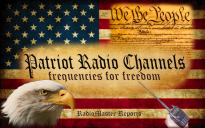

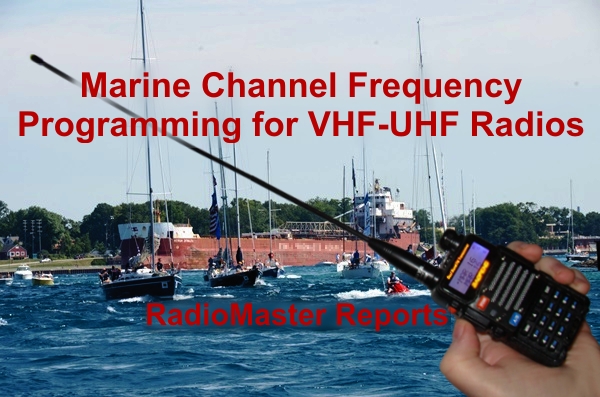

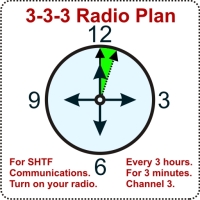

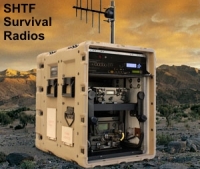
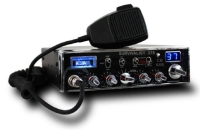






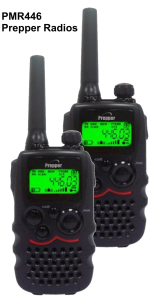

An absolutely superb list for monitoring communications. Unlicensed transmitting, however, is a different story. The tricky part is defining what constitutes an emergency.
In an SHTF or other “Survival” situation, the “LAW” doesn’t exist . . . No FCC . . . No COPS . . . Just LIFE or DEATH . . . PERIOD !!!
So, “unlicensed transmitting” means “NOTHING” in that situation !!!
Unless we are experiencing an apocalyptic end of the world event that affects the entire planet, or at least North America, the “LAW” absolutely does exist, and will continue to exist. If you think otherwise, then please review Louisiana during the Hurricane Katrina disaster, or Homestead, Florida during their last hurricane, or any of the earthquake disasters that struck the West Coast.
A “SHTF” situation does not have to be widespread to be a serious threat to survival. Local events can be just as devastating, just on a local scale and a shorter time frame. And you can bet that the “LAW” will be converging on the area and monitoring everything that goes on.
At the risk of resurrecting a dead thread, part 97 seems to address this (sort of). I wonder why folks resist getting licensed. They can develop the skill set needed for emergency situations.
I’m not going to bother explain entirely why I refuse to get a license, yet there are many. Those who do not understand why folks like me are opposed to a license, do not fully understand what we are headed into any way, so I will not bother further. Rest assured that I will not likely need and will use the HAM bands during the crisis I am expecting. And if I did, #1, it would be only for emergency situations, and #2, if I desired to during a non life threatening situation, the ‘law’ would not catch me anyway. For as long as the repeaters stay operational, I will, however, be monitoring.
Ok bro. For the rest of us, getting a Ham license will allow you to help your community during natural disasters, etc. And that is no small thing – sort of one of the things that Prepping is about.
Maybe the rest of you could get together and make the first blog to extol upon the FCC, Part 97, and why every prepper needs an amateur radio license walt? Oh wait…
@Milton, Jerry, and Chief – Have a link showing where an operator was given a notice or fine by the FCC for unlicensed operation in the amateur bands and that WASN’T being a complete asshole on the air over the course of months?
Um, I never even mentioned fines. My point was simply that getting a license (easy to do, low cost) allows you broader access to disaster response and other preparedness activities. It also allows you to take an active part in low-level emergency responses (like damage assessment after a tornado for instance).
Now if that’s not something that interests you then no worries – but I do find it odd that those of us that may choose to do so are apparently the “wrong” kind of prepper. SMH.
Check your site a couple times a week hoping for updates. Thanks for all the great info already posted.
Thanks for the list.
thanks for this great article and the files. my whole team has it loaded in their radios and it works very well
Yes the boafengs are a good radio and screaming bargain. However the antenna that comes with the radio is not suitable for all the frequencies recommended, and will have a high SWR that may ruin the radio over time if it is not operated in the 2m or 70cm bands. To operate the radio outside those bands, other antennas must be attached. I am one of the very few to warn others about this. ..
Information is great. but i couldn’t get the .csv file imported to my Boafeng BF-F9v2+ . where did i go wrong?
Open the CSV and copy/paste the info into the fields in Chirp. Once you have done that, save it as a new file and then use the new file to make changes or transfer to a new radio.
I was just researching that very same thought in regards to the Boafeng antenna (GMRS & MURS) and came across your post. Spent most of the day researching how to create a base antenna to operate within the GMRS & MURS frequencies (Cross Band mobile) and realized that if the Cross Band radio has a special antenna then so should the HT’s
Is there a solution for the Boafengs?
Why do the FRS/GMRS/PMR/MURS all have a privacy tone entered? Should it be turned off so we can hear anyone transmitting on these frequencies?
“All FRS, GMRS, PMR, and MURS channels for survivalists and preppers are programmed (transmitting the most common PL tone squelch but receiving carrier squelch for maximum interoperability).”
I wanted to load this into my UV5R but it keeps saying “unknown file format” when I try to import it into Chirp. I’m pretty new to these radios, can someone steer me in the right direction? I had saved the file in my Dropbox and tried to import it into Chirp from there. I’d love to get these frequencies into my radio. Any thoughts?
Download the CSV file and import it into Chirp.
why are channels 0 and 1 the same thing?
Nice job at creating this file!! Thank you!
I am of the thought that a hammy Licence is kind of a double edged sword just like a carry permit is not a req in most situations for protecting yourself or hunting on private property, vehicles, and such…
them carrying out treason ops w/ licences and badges is far worse than a noob pressing the wrong button one time..
Pirates on the other hand would make coms useless by blasting music for hours and hours or drunken ranting and rapping for hours and hours on all the wrong channels… stuff has it’s limitations… they go too far with it most often and is the worst bully on the block and by licencing yourself you are also a bully in a sense.(not helping maybe) With codes and enforcement jargon like code 45-34 straydog pooping on wrong fescue or some dumb shit like that… lol
For me if it’s not neccesary for a particular job or purpose then I’d say no need to get a licence just to “help the community”, Helping the community happens just by being yourself whether you use the internet,phone,radio or none of the above to communicate…
Licenses are for Bootlickers in my opinion
Hi everyone. Been listening every day for other on the frequencies listed. Have heard preppers. Good 333 plan.
Having trouble opening this file. Help please.
Since anyone can access this file, and know what freqs. we have on our radios, remember opsec. the channel numbers perhaps, develop a code, etc.
In a life and death or desater or somebody in trouble you can operate on police fire etc what ever you need to get help if your cell phone dont work or get a signal. And or you dont have a cell phone. I take a marine hand held with me fishen and you dont have to have a license as long as you usnon comercial channel .for boat to shore etc. Check the regs i fish on the river there ant no 300 foot boats just red neck boats . Tge uv5r can be used the same as a frs gmrs as long as your in the country out of town and use on low in town
Given the 2017 GMRS/FRS updates, is the programming offered in the file up to date?
Thanks for asking. The downloadable file and the printable list was originally designed to include and to be compatible with the new 2017 GMRS/FRS channels. It works perfectly for talking with current GMRS and FRS radios and older legacy GMRS and FRS radios.
Looks like the download link is down! I’d really like the file
The download link is down! I am next in line for wanting the file. Thank you in advance!
What happened to the file? I had it, apparently deleted it. Now have a new radio and need to upload the file to it!
Can re-upload this file? It is no longer on the Dropbox link.
Thank you!
Any chance you still have the file?
file https://drive.google.com/drive/folders/1MYP1Rvx5RTwbSOIgVP-00e9NXiHIutcz?usp=sharing
The csv file download doesn’t work
thanks for the file
Here’s a link to the file
https://drive.google.com/drive/folders/1MYP1Rvx5RTwbSOIgVP-00e9NXiHIutcz?usp=sharing
any idea how current this file is?
thanks for the file : )
I read this comment thread and though I agree with the spirit of FTG and dodging the licensing thing, there’s another part of me that’s like, what’s the big deal? I believe I am going to get my tech license, at least. Remember, radio broadcasting isn’t a “right.” It is a privilege, therefore, it is totally within the boundaries of govt to establish reasonable best practices and expectations for individuals intent on using certain spectrums of RF. It’s cheap! For the price of a box of ammo you can get a 1st rung hammy license. What’s the big deal? Anyway, great blog post, even after all these years. I am grateful this was already “out there” ahead of me, waiting for my arrival to discover. Thanks again!
What the he’ll are you attempting to say???
If I must explain that which appears to explain itself, then perhaps one of us needs to maybe re-read it… not sure, but reading & comprehension kinda go together. Sorry but this question deserves some flak for being kinda dumb..
your list worked great in my baofeng now we have all the common channel frequency’s
can talk to the frs too
Well , for those not wanting a license ( to prevent being on a database or something).
1) if you have been born, have a credit/debit card, a job,paid taxes,a driver’s license, library card , you are in a bunch already.
2) if you get your ham license-
You have the opportunity to learn how and why radio works and to legally experiment with it
Want to add a high gain antenna to your HT ? – possible in ham radio. Want to send data to a friend across town ? – possible.
Sure there are some things you CANT do ,but considering the spectrum you get access to , it is well worth it.
The govt cant monitor everything and during shtf, probably even less due to calamity, worker call offs , and resource restrictions.
In the end, just like a gun, a radio is only as good as the guy holding it.
If you haven’t practiced with a gun and know it’s capabilities, how to clean and maintain it- it may work, but not as effectively as when a practiced shooter uses it.
Radios are no different.
The time you take to obtain a license and learn how to use it will be well spent
I found these while looking for the 98 channel list file so I can upload to my radios. Thanks.